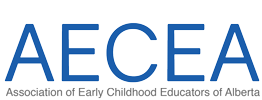PROJECT WORK
Early Childhood Educators at Seeds of SPICE are extremely skilled at being physically and mindfully present for children and are there to support them as a co-learner, co-researcher and co-imaginer of possibilities. Children at our programs come to the team with ideas of what they might like to do or staff observe a specific interest. Staff ask open ended questions on what that may look like, what materials they need, who needs to be included in the work, where this will take place and when they would like this to happen. Staff encourage children to use a variety of multimodel literacies to help map out their ideas through drawing, videos, loose material building and clay work. Children are in the process of learning about their idea and deciding what steps will be taken next. With this type of approach to learning, so many developmental skills are being supported and strengthened while children are fully engaged in an activity that derived from themselves.
BAKE SALE PROJECT
The observed interest was that the children asked to bake often. Staff asked them what else could they do than bake and eat it. One of the children suggested a bake sale. Staff asked questions like, what do you need to do a bake sale? Where will you have it? How do you get people to come to it? How do we make the baking?
The children suggested researching recipes, going to the store and buying the ingredients, advertising for it and pricing the baking themselves. This turned into a week project and had the children fully engaged because they all had an active self-chosen role.
The children not only thought of the food they wanted to bake, they thought of the prices and packaged the baking themselves, made a sign like the “pizza place” and stood outside flipping it like they do, designed a theatre setting, developed a play and thought they should wear costumes to entice people to come to the sale. The children made $86.00 and were extremely excited to purchase toys that they decided on as a group!
PUPPET SHOW PROJECT
In the morning, I found that child S has been cutting papers with same drawings in it. As I came close the child S, he said,
“I want to make tickets for the puppet show this afternoon”.
“What puppet show?” I asked back to him.
Child S told me that he wants to have a puppet show in the afternoon. My colleagues and I were wondering if the materials to make puppets would extend his thought on puppet show. We also questioned how we can invite other children to this play. We prepared materials such as popsicle sticks, plastic lids, googly eyes, beads, pompoms, pine cones, glue and yarn.
He walked around and gave his tickets to others including the educators. Then, he and few other children worked on making puppets with different materials. After almost 20 minutes of making puppets, children started calling people who had tickets. As people gathered around them, child S and child E started having a show.
They picked up one puppet and moved around the cardboard box. While performing a puppet show to audience, they compared the height of their puppets and how beautiful their puppets were.
“Hello, I am the tallest person here!”
“No, I am the tallest!”
“Then, I am clearly most beautiful one here!”
“No, I am also the most beautiful one!”
When we think about the term product verses process, in dramatic play, “the process is what counts” (Dietz & Kashin, 2012, p.104). While children engage in dramatic play, it is the process and the product (Dietz & Kashin, 2012, p.104).
This documentation played over a month helped me to understand children’s sociodramatic play and how we can support children’s dramatic play in a various way. “As an educator, you guide, scaffold, nurture, model, and facilitate children’s learning and through this work you learn about what children know and how children make meaning of the world” (Makovichuk, Hewes, Lirette, & Thomas, 2014, p.53). And the documentation is a best process that “spirals upward to higher forms of listening, thinking, and learning for all the people involved” (Stacey, 2014, p.95)









